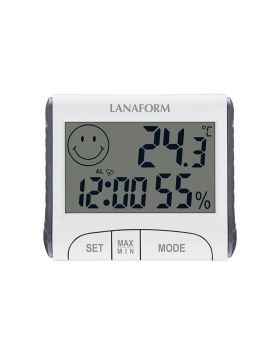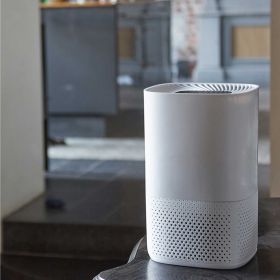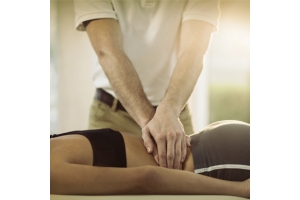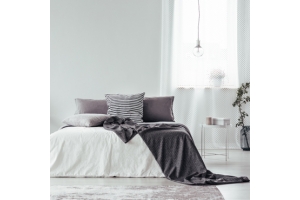Using a humidifier to minimise the winter discomforts
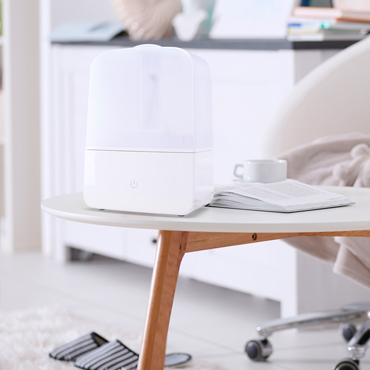
The cold weather is back, along with all its discomforts. Like us, you are bound to have the unpleasant feeling of dryness in your nose, eyes and even your skin... Are you feeling more susceptible to colds and other illnesses, such as 'flu? Is your sleep interrupted by breathing difficulties? Symptoms like this are down to the quality of the air in your environment, which is linked to the level of humidity. Here's how to rectify this!
The importance of using a humidifier in cold weather
Air is an essential resource, vital for our health. On average, we breathe 20,000 times a day, equivalent to a daily requirement of 12,000 litres of air per person. This is a considerable quantity of air, but the quality of this air leaves something to be desired once the central heating is switched back on. The reason for this is the relative humidity level found in the air.
Relative humidity is the ratio in % between the quantity of water present in the air at a given moment and the maximum quantity of water that it can hold at a given temperature.
For indoor areas, doctors and specialists agree that the ideal relative humidity level is between 40 and 60%. This humidity level feels comfortable and is beneficial for our health and well-being.
Why does the humidity level change in winter?
The cold air outdoors contains less humidity than warm air. Consequently, the air in winter is drier. Add to this the fact that, when you switch your heating back on, the level of humidity in your house goes into free fall. Indeed, when this happens, it struggles to reach 30 percent. This level is too low. It can bring on feelings of burning in the eyes, the mucous membranes in the nose, the throat, along with tiredness and headaches. It can also make you susceptible to the spreading of viruses and bacteria.
On the other hand, if the humidity level is too high, it can cause other problems in your home, such as mould, fungus and the proliferation of bacteria, not to mention health problems (asthma, allergies, etc.).

How do I know if I need a humidifier in my home?
The most effective way of measuring the level of humidity in your home is to use a hygrometer (available here). This needs to be placed in the middle of the room, so it is away from windows and exterior doors. If the humidity level is above 65%, your air is too humid. If it is below 40%, your air is actually too dry and you need a humidifier.
Take a look at our humidifiers with integrated hygrometer: the New Vapolux and the Notus.
What types of professional humidifier are there on the market?
It's always important to ventilate indoor spaces to refresh the air you are breathing. Even so, remember that long, repeated periods of ventilation using cold air from outdoors will dry out the air indoors.
Initially, for an immediate temporary solution, you can put a bowl of hot water in the room to be humidified. Of course, the results of this home-made method are far from being as effective and accurate as those obtained by using a professional humidifier.
There are 4 humidifying systems available :
The evaporator, where the dry air is fed through evaporation filters saturated with water.
The vaporiser, which diffuses a warm mist into the air in the room.
The air washer, which combines the humidification function with air purification.
The ultrasonic humidifier, which diffuses a cold mist consisting of minuscule droplets of water into the room.
The ultrasonic humidifier is the humidification system we decided to develop at Lanaform.
The advantages of ultrasonic humidifiers :
Silent
Some models are designed to diffuse essential oils
Low energy consumption
Accurate, continuous adjustment for an optimal humidity level

 EN
EN  FR
FR  NL
NL  DE
DE 


